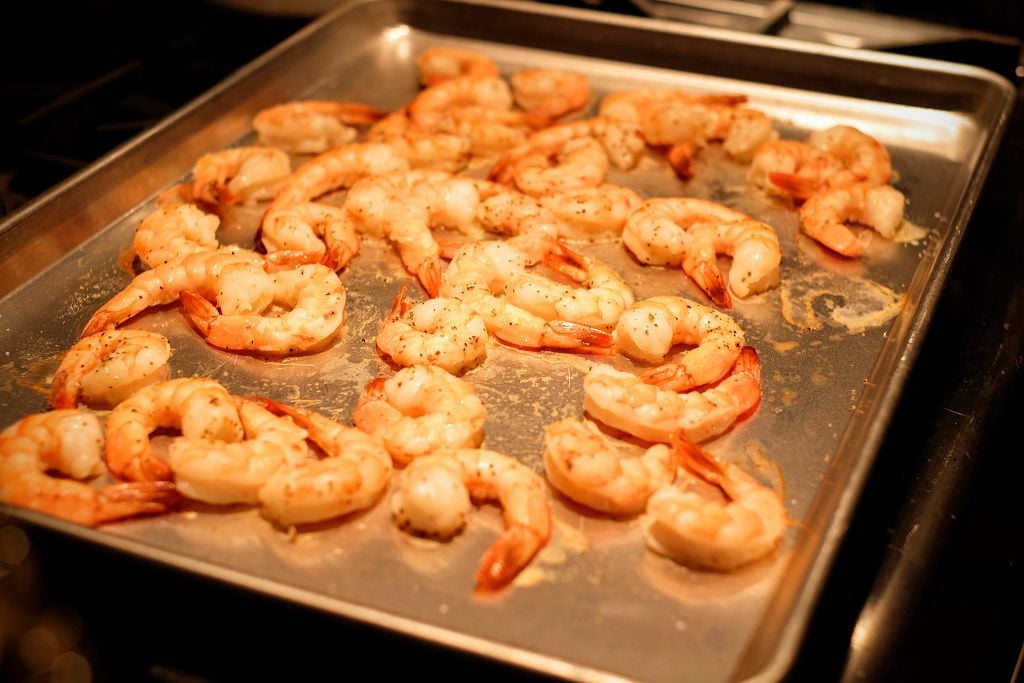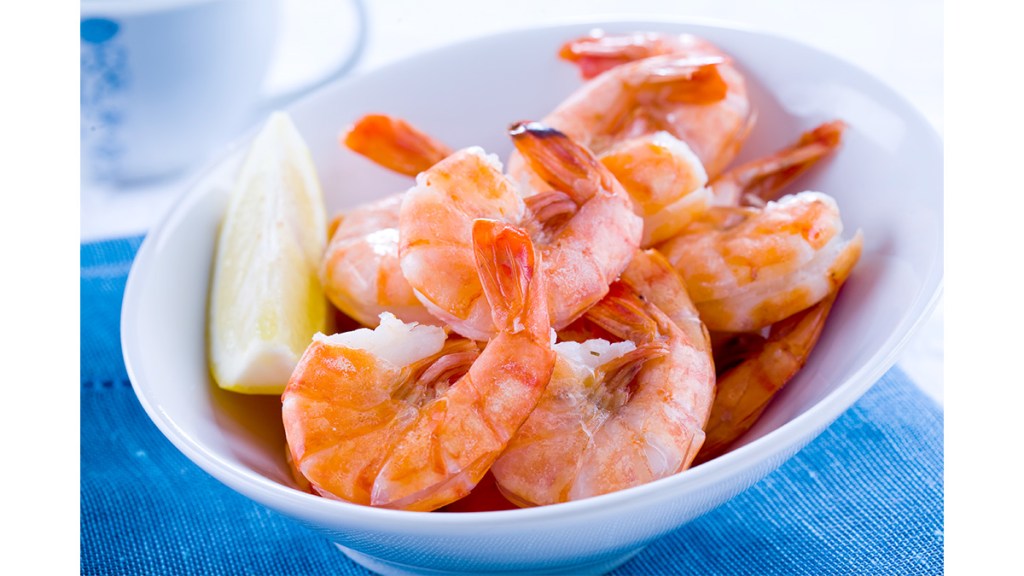Shuck shrimp, fry them, sauté them, or bake them. There are a lot of different ways to enjoy them, and they’re a simple way to make meals taste more like seafood. That’s why it’s so annoying when you heat up leftovers and the shellfish gets tough and chewy. So, we asked a professional chef what his favorite way is to reheat shrimp. Here are some extra options to suit your needs. If all this talk about shrimp makes you hungry for seafood, we’ve also included a few recipes that are great for warming up the next day. Just keep scrolling to learn more.
Shrimp is one of those versatile ingredients that can be incorporated into a variety of dishes, from shrimp scampi to shrimp tacos. It’s quick to cook, making it a great option for busy weeknights. And it’s delicious! But like many types of seafood, cooked shrimp doesn’t last forever. So what do you do when you have leftovers? Can you reheat cooked shrimp?
The short answer is yes, you can safely reheat previously cooked shrimp, as long as you do it properly Reheating shrimp isn’t quite as simple as just popping it back in the microwave To enjoy shrimp at its best – plump, juicy and tender – you need to pay attention to a few important details.
Here’s what you need to know about the best way to reheat shrimp whether it was grilled sautéed, baked or boiled.
How to Tell if Leftover Shrimp is Still Good
Before reheating shrimp, you first need to determine if it’s still safe to eat. Give the shrimp a close look and sniff test:
-
The shrimp should still have a firm, plump texture. Any shriveling or mushiness is a red flag
-
There shouldn’t be any sliminess. Discard shrimp if it has developed a slippery coating.
-
Raw shrimp flesh should glisten like pearls. Old, oxidized shrimp will have a dull, matte look.
-
Cooked shrimp flesh should be opaque and white. If it has turned translucent, toss it.
-
Take a whiff. Your nose will know! Shrimp past its prime gives off an unmistakable ammonia odor. Fresh, unspoiled shrimp has a mild, briny scent.
Don’t take chances with questionable shrimp. If in doubt, throw it out.
Now let’s look at the best reheating methods to gently warm your leftover shrimp without overcooking.
Reheating Shrimp in the Oven
The oven allows you to evenly heat shrimp dishes without the intensity of the microwave. It’s a great option for reheating shrimp-based casseroles, baked shrimp dishes or breaded shrimp.
Here’s a simple oven reheating technique:
-
Preheat oven to 300°F.
-
Place shrimp in a lightly oiled oven-safe dish. A shallow casserole dish or rimmed baking sheet works well.
-
Cover tightly with foil. This helps retain moisture as the shrimp warms.
-
Bake for 10 to 15 minutes until heated through. Check at 10 minutes by poking the biggest shrimp piece with a fork. If the center is still cool, continue heating for a few more minutes.
-
Let the shrimp rest for 5 minutes before serving. The temperature will equilibrate during this time, eliminating cold spots.
Stovetop Skillet Method
For sautéed shrimp or just a small portion, the stovetop skillet method may be your best bet for evenly reheated shrimp.
-
Heat 1 tbsp oil in a skillet over medium-low heat.
-
Add the cold shrimp and stir gently to coat with oil.
-
Cover and cook for 2 to 5 minutes, gently stirring a few times, until warmed through.
-
Take care not to overcook. As soon as the shrimp are hot, remove them from the pan.
-
If reheating shrimp with sauce or other ingredients like garlic or vegetables, add a splash of water or broth to the pan to keep everything moist.
Steaming
Steaming is one of the most gentle ways to reheat shrimp without making them rubbery. It adds no extra fat and retains moisture efficiently. Steaming works well for reheating boiled shrimp or lightly seasoned shrimp.
-
In a steamer basket or perforated insert, arrange shrimp in a single layer, evenly spaced.
-
Set over a pot with 1 to 2 inches simmering water.
-
Cover and steam just until warmed through, 5 to 7 minutes. Don’t oversteam.
-
Alternatively, use a splatter guard over a skillet to create a steam environment. Add 2 to 3 tbsp water to the skillet before arranging the shrimp in a single layer and covering with the splatter guard.
Microwave
The microwave can be used for quickly reheating small amounts of shrimp. But the intense heat can easily overcook shrimp, so shorter heating times and lower power is key.
-
Arrange shrimp in a shallow microwave-safe container in a single layer.
-
Cover with a vented lid or paper towel. This prevents moisture loss.
-
Microwave on 50% power for 1 to 1 1/2 minutes.
-
Let rest 1 minute before checking doneness. Microwave for 10 to 20 seconds more if needed.
-
Add a splash of water or broth to the container before heating to create a little steam and help prevent overcooking.
Tips for the Best Results
Follow these tips for safely reheated shrimp with the perfect tender bite:
-
Always refrigerate leftover shrimp within 2 hours of cooking to prevent bacterial growth. Use within 3 to 4 days.
-
Portion shrimp into smaller containers or bags before freezing for quick, easy reheating.
-
Thaw frozen shrimp gradually in the refrigerator before reheating. Don’t thaw at room temperature.
-
Bring shrimp to room temperature before reheating for more even results.
-
Reheat gently using lower oven temperatures, skillet heat or microwave power.
-
Check shrimp frequently to avoid overcooking.
-
Allow a standing time after reheating so the temperature equalizes.
-
Add a small amount of liquid to shrimp before reheating to introduce a little steam and retain moisture.
-
Toss reheated shrimp with other hot ingredients like rice or pasta to warm through.
With proper handling, you can safely reheat and enjoy previously cooked shrimp. Just be careful not to overcook them. Shrimp can go from succulent to rubbery in mere minutes if exposed to too much heat. Use one of these methods to gently warm your shrimp without sacrificing that tender texture.
So go ahead and make a big batch of shrimp étouffée, frittata or stir fry. Having leftovers can be a good thing when you know how to reheat them properly. A reheat-worthy shrimp dish takes the pressure off of dinnertime on busy nights. Just remember to chill or freeze the extra shrimp within 2 hours and use it within 3 to 4 days for food safety.
Frequently Asked Questions About Reheating Shrimp
How do you reheat shrimp in an air fryer?
Air fryers can quickly reheat breaded shrimp or shrimp with a crispy coating. Preheat air fryer to 350°F. Place shrimp in single layer in fryer basket. Air fry 2 to 5 minutes, shaking basket occasionally, until warmed through. For plain shrimp, mist with oil spray before air frying.
Can you put shrimp straight from freezer into Instant Pot?
It’s not recommended. Thaw frozen shrimp overnight in the refrigerator before reheating in Instant Pot. Putting frozen shrimp directly into hot Instant Pot liquid may result in uneven cooking.
How long does reheated shrimp last in the fridge?
Properly stored, reheated leftover shrimp will keep for 3 to 4 days in the refrigerator. Reheated shrimp has an even shorter shelf life than freshly cooked. Eat within 3 days for best quality and safety.
Can you reheat already cooked shrimp?
Yes, you can safely reheat fully cooked shrimp one time using gentle, moist heat methods like the oven, stovetop skillet or steamer. Just don’t reheat more than once. Avoid reheating cooked shrimp that were left out at room temperature for over 2 hours.
Is reheated shrimp still good the next day?
It’s best to consume reheated shrimp within 3 to 4 days. Reheated seafood has a shorter shelf life than fresh. Store leftover reheated shrimp covered in the fridge and use within 3 days. Discard if you notice any sour, ammonia odors.
Reheating shrimp takes a little more care than simply punching a button on the microwave. But armed with these techniques, you can enjoy the full flavor and tender texture of your leftover shrimp. Gently reheated shrimp lets you get back some of that just-cooked goodness, even if it’s not quite as perfect as the first time around.

Do shell-on shrimp need to be peeled before reheating?
When you heat up shell-on shrimp from a seafood boil or a peel-and-eat appetizer, it’s best to leave the shell on so the seafood’s juices stay inside. Once reheated and slightly cooled, you can remove the shells and dig in. (Click through to find out how to cook shrimp with the shell on to save time and make delicious food. ).

The importance of reheating shrimp correctly
Although you can eat leftover shrimp cold, reheating it is the tastier option for waking up those delicious flavors again. That said, you should always use gentle heat when warming up shellfish like shrimp as intense heat may cause it to overcook and become rubbery. It’s best to consume the shrimp within 3 to 4 days of cooking it. But, if the shrimp feels mushy, has a strong odor and/or a dull color you’re better off discarding it than risking food poisoning symptoms like stomachaches and nausea.
